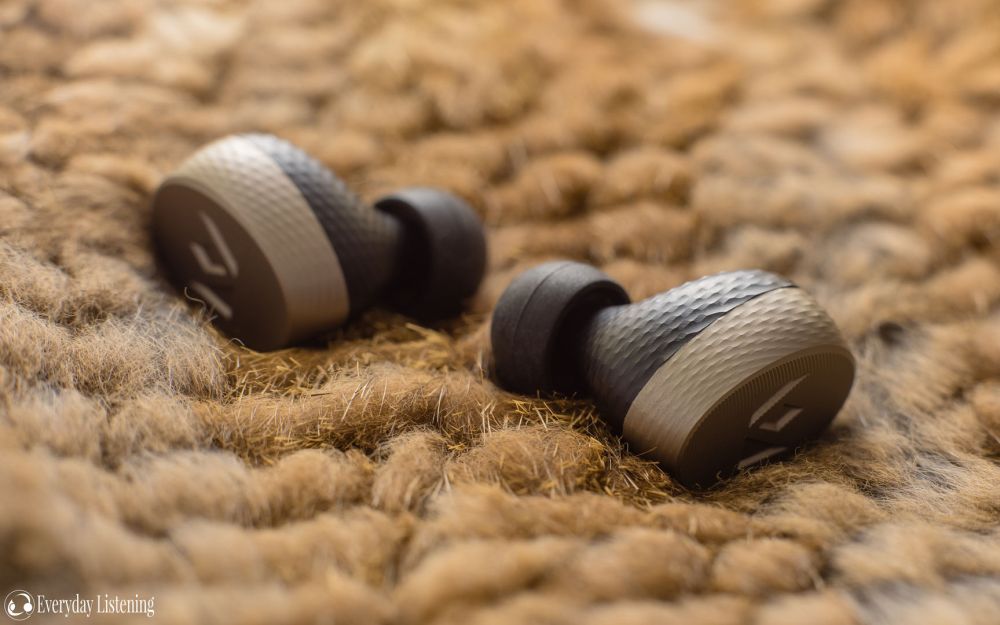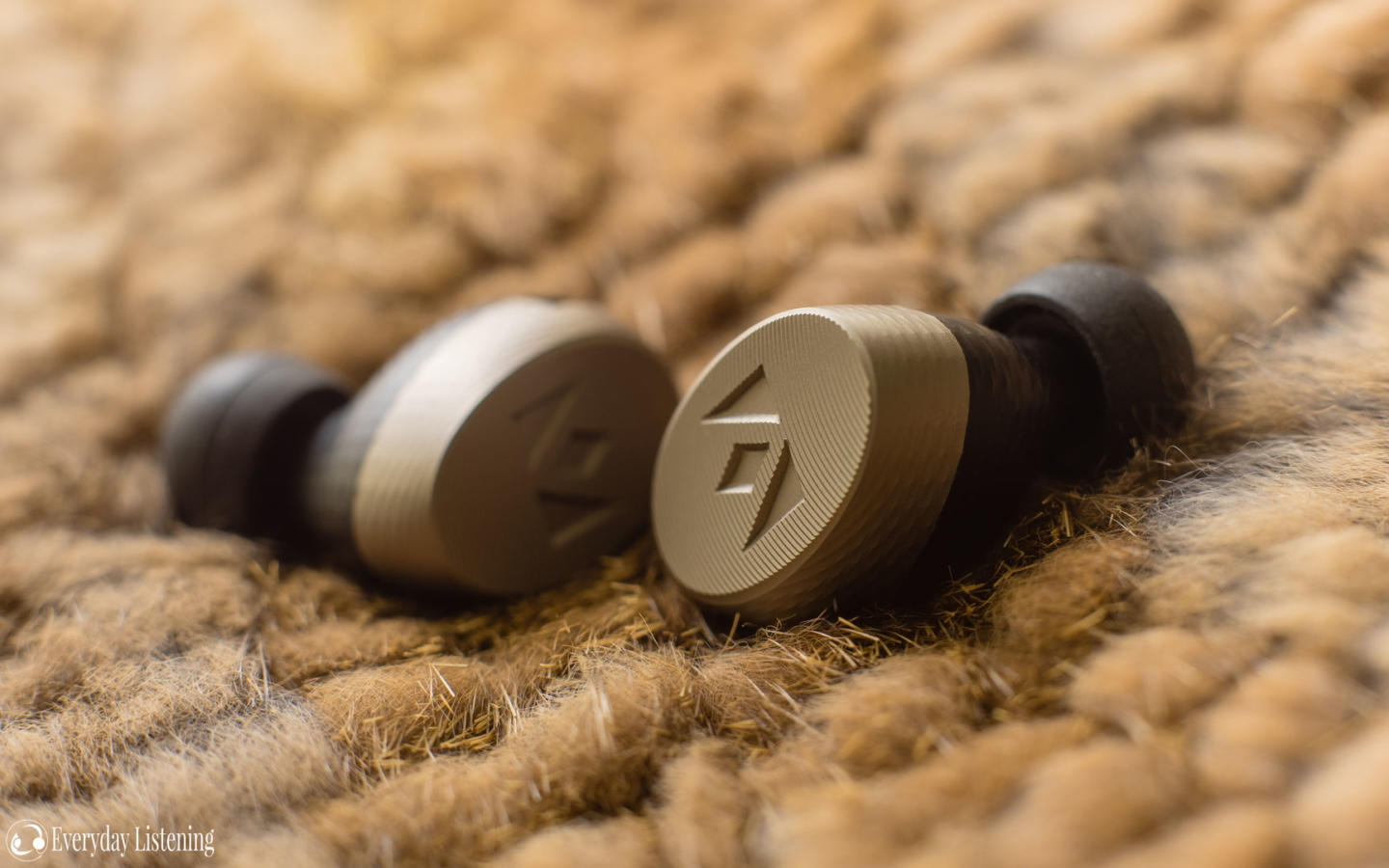Comparisons –

Campfire Audio Jupiter ($800): The Campfire IEMs are some of the best in the biz regarding build quality. The Jupiter is no exception, matching the Katana on finish and aesthetic design. The Campfire is sharper but also locks more firmly into the ear, it isolates more as a result. The Jupiter is more u-shaped with a warmer, more laid-back midrange. The Jupiter delivers slightly more sub-bass extension with greater slam and rumble. However, it lacks the tightness of the Katana, delivering less concise impact. Mid-bass is slightly fuller on the Jupiter but not nearly to the extent of the Django, Hyla or ie800. As a result, lower-mids are just slightly warmer with fuller body. However, this is counteracted by the Jupiter’s excellent resolution and they do sound very resolving as a result. Still, the Katana has greater clarity and better separation if lacking some body by comparison. Upper mids tell a similar story, the Jupiter is liquid smooth and clear with strong resolution and layering.
However, the Katana is once again clearer if slightly less natural. The Jupiter has an incredibly detailed lower-treble response, perhaps even a hair more so than the Katana. That said, the Katana has greater air and a little more resolution up top, where the Jupiter sounds slightly thinner. It does sound more forward, where the Jupiter sounds a little cleaner, but the Katana remains composed on account of its excellent control. Both have flawless extension and craft large stages. The Katana is slightly larger while the Jupiter has more multi-dimensional imaging due to its liquidity. The Katana separates slightly better, most notably with regards to bass. The Katana does flaunt its technical advantages and its technical upgrades, but there’s no denying the charm of the smooth and immersive presentation of the Jupiter.
Hyla CE-5 ($940): The Hyla is entirely acrylic but employs titanium internals and a deeper fitting design. Its vivid V-shaped sound contrasts heavily to the very balanced Katana; and though this sculpted tuning does have its caveats, they are far more engaging as a result. Being a hybrid, the Hyla has greater bass extension with a slightly looser but also considerably more impactful sub-bass response. It also has a much warmer, fuller mid-bass presentation that offers greater engagement and physicality but also colours its bass and lower-midrange; lower mids, though still clear, are slightly behind in the mix and more full-bodied than the Katana. As a result of their colouration, the Hyla doesn’t sound quite as natural and linear as the Katana within its lower-midrange nor is it as defined. Upper mids also differ, the Hyla is much smoother and a little more laid-back while the Katana is brighter and more revealing. That said, the Hyla maintains excellent resolution and vocals are more natural than the thinner, more clarity enhanced Katana if missing the same level of background detail and layering.
The Hyla also provides an energetic treble response with greater attack. It lacks the air of the Katana, instead focussing on a cleaner background and with a larger lower-treble focus. As such, foreground detailing is considerably more aggressive and actual detail retrieval is similarly strong on both within lower-treble. Both extend impeccably though the Katana is more resolving within the very highest registers. As the Katana extends more linearly, it is more detailed overall and has the larger, airier stage. And, its more neutral tone grants it with greater bass and midrange separation. That said, the Hyla remains similarly composed during complex passages due to its darker background. Considering its asking price, the Hyla keeps up very well and though its more sculpted signature isn’t as realistic, it is considerably more vibrant with great bass body without compromising nuance.
Noble Django ($1000): The Django only employs a metal faceplate with a plastic inner housing. As a result, though still visually captivating, it does lack the premium feel of Noble’s higher offering. Furthermore, it is a considerably larger earphone at around 30% thicker, though fit feels the same in the ear due to identical shaping. The Django is a considerably warmer, more laid-back earphone. It has a warm, mid-bass focussed low-end that lacks the concise sub-bass impact of the Katana but offers up significantly more body in return. As a result, the Django is markedly less defined and separated, but it does fair better in noisier environments. Through this, lower-mids are thicker and fuller. The Django has considerably less definition and clarity to its lower midrange, it is quite a natural over revealing presentation. Upper mids do have greater transparency and clarity through slight midrange brightness.
The Katana maintains a sizeable lead in resolution and clarity but the Django is smoother and just as linear into the lower-treble frequencies. The Django has a considerably more laid-back treble response. Lower-treble sits in line with the upper-midrange with nice attack and detailing while the Katana is more detailed yet and more aggressive in its presentation. The Django smooths off into the middle and upper-treble where the Katana progressively increases in emphasis. As a result, we have two greatly contrasting sounds; the Katana is more revealing, airy and resolving while the Django is smoother and more musical. This does affect their staging properties, the Django doesn’t image or separate nearly as well as the Katana but both are very spacious earphones, the Katana especially so. The Django’s mellow sound isn’t for everyone, but they do offer nice contrast to the other offerings out there and especially Noble’s more analytical Katana.
Sennheiser ie800 ($1000): Though no longer quite as price prohibitive, the ie800 is still a very resolving earphone. The Sennheiser’s ceramic construction is unique and compact, crafting greater long-term comfort. That said, its design is considerably less isolating and less ergonomic; prone to instability and microphonics. The ie800 is more v-shaped, more engaging and less realistic as a result. The Senn has notably enhanced sub-bass, it quite isn’t as tight as the Katana but delivers greater slam and rumble. The ie800 also has a relatively neutral mid-bass tone and is well-defined as a result. It is warmer than the Katana and less linear, but also appreciably less coloured than most V-shaped earphones like the Hyla. The ie800 has a brighter midrange that delivers immense clarity throughout. Lower mids have a fuller fundamental due to the ie800’s enhanced bass but lower mids are thinner and brighter above; the Katana is almost as clear but more natural and considerably realistic in timbre. That said, upper mids are exquisite on the ie800, incredibly clear with excellent resolution all the while remaining smooth and refined.
The Katana is slightly more aggressive and slightly less natural but is more layered in return. Highs are more aggressive on the ie800 both lower and middle-treble. As a result, it is crisper and brings more detail to the fore but it is also thinner and less realistic, masking some finer nuances. The Katana actually retrieves more detail and it is far more linear within the higher frequencies despite not being an especially linear earphone. Both extend into the highest registers but the Katana resolves the highest details slightly better. As a result, the Katana has a little more air and separation. So, though both are incredibly resolving, the Katana does so in a more realistic fashion and with a slight technical advantage. The Senn also possesses quite an infamous stage that is just as large as the Katana’s. It’s also just as separated within the mids and highs though imaging isn’t as precise due to its more sculpted signature. Without a doubt, some may prefer the more engaging Sennheiser, but its ergonomics and thin treble are less universally adored.
Verdict –
The Katana offers supreme luxury, tonal finesse and exquisite technicality, as it should. At $1850 USD, value has no place; this isn’t a product for the average listener, this is a statement. In line with this mentality, Noble pamper the buyer with a comprehensive unboxing and a meticulous build that catches jealous glances like few others. The Katana’s neutral to bright signature won’t suit every buyer, but that’s the ingenuity of Noble’s flagship offerings that cover both sides of the analytical/engaging spectrum. These aren’t realistic in-ears, but engaging ones.

Because, the Katana represents a nice step forward for flagships, not just in performance, but also mindset. I’m a huge advocate of personal preference. Not everyone is looking for the most realistic or balanced earphone on the market, often, we’re looking for a little more engagement and sometimes something completely unique. The Katana occupies a space very close to outright neutrality but with heightened clarity and lifelike resolution that dissolve the membrane between the listener and music. It isn’t that perfectly neutral nor balanced earphone, but that’s the beauty of the Katana. It’s more than neutral.



